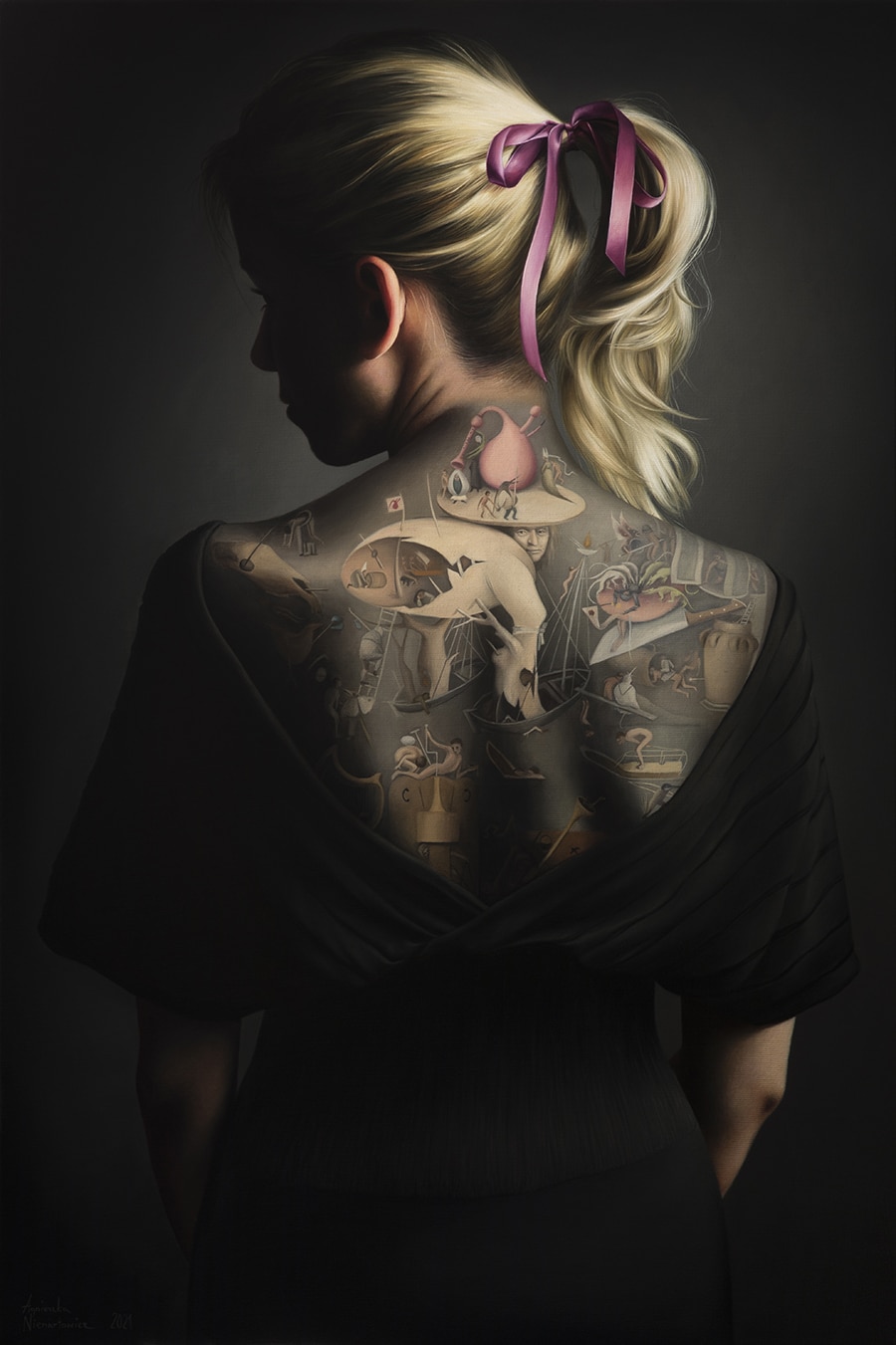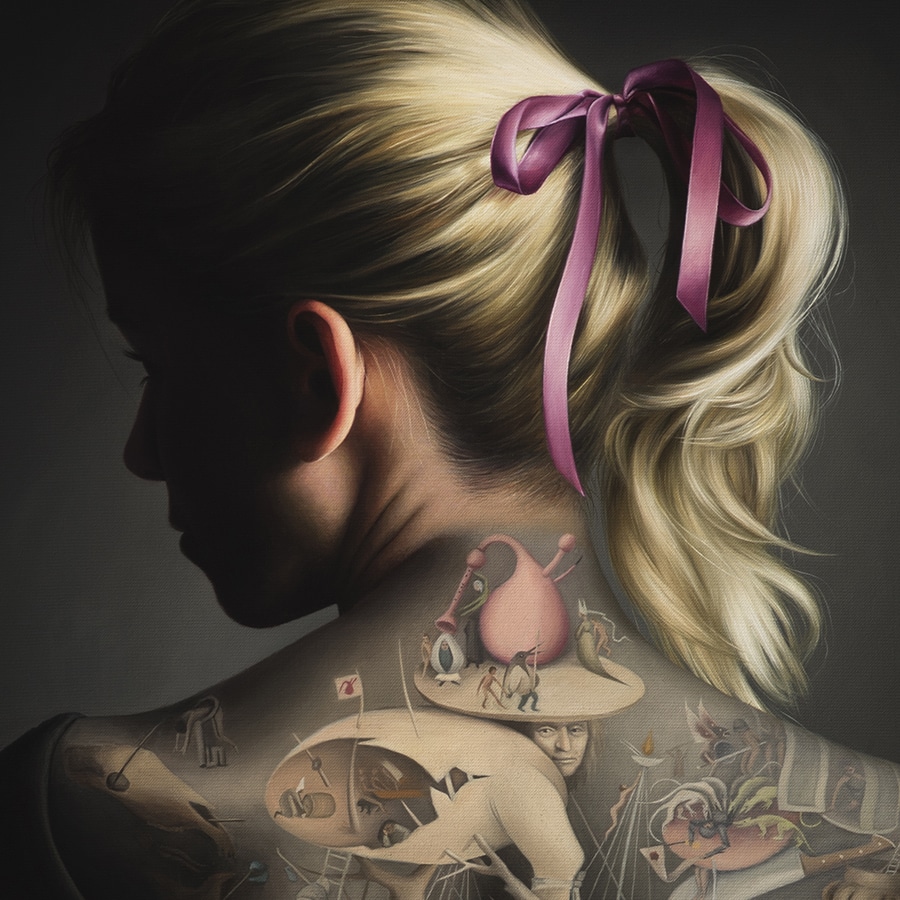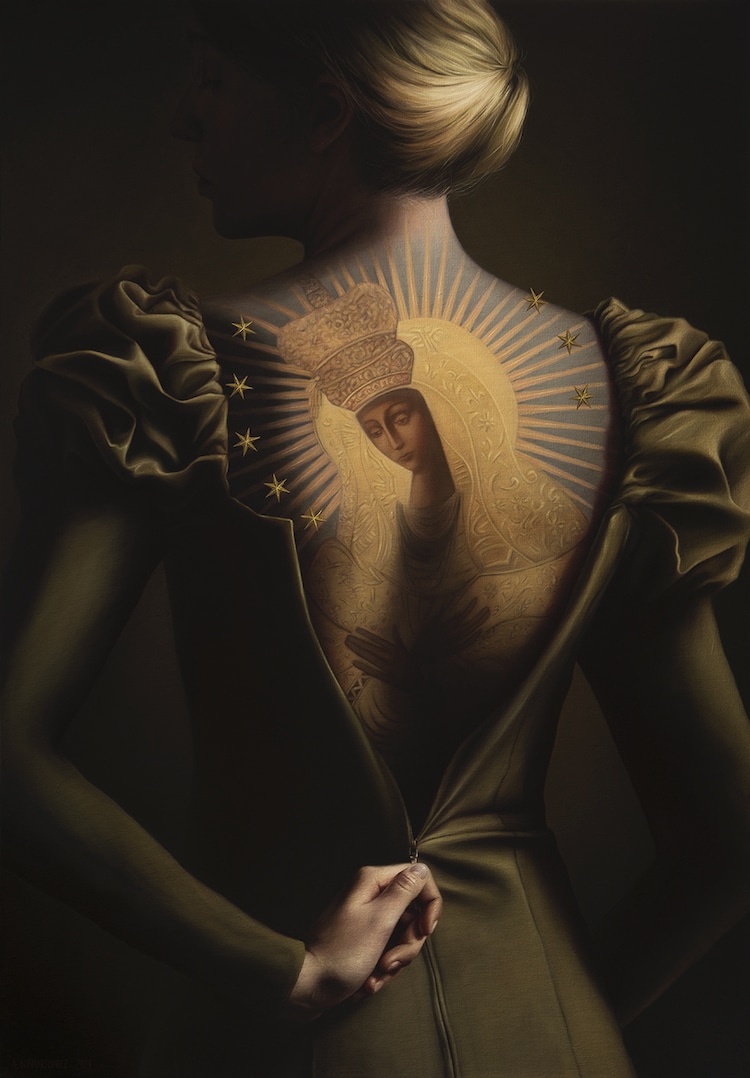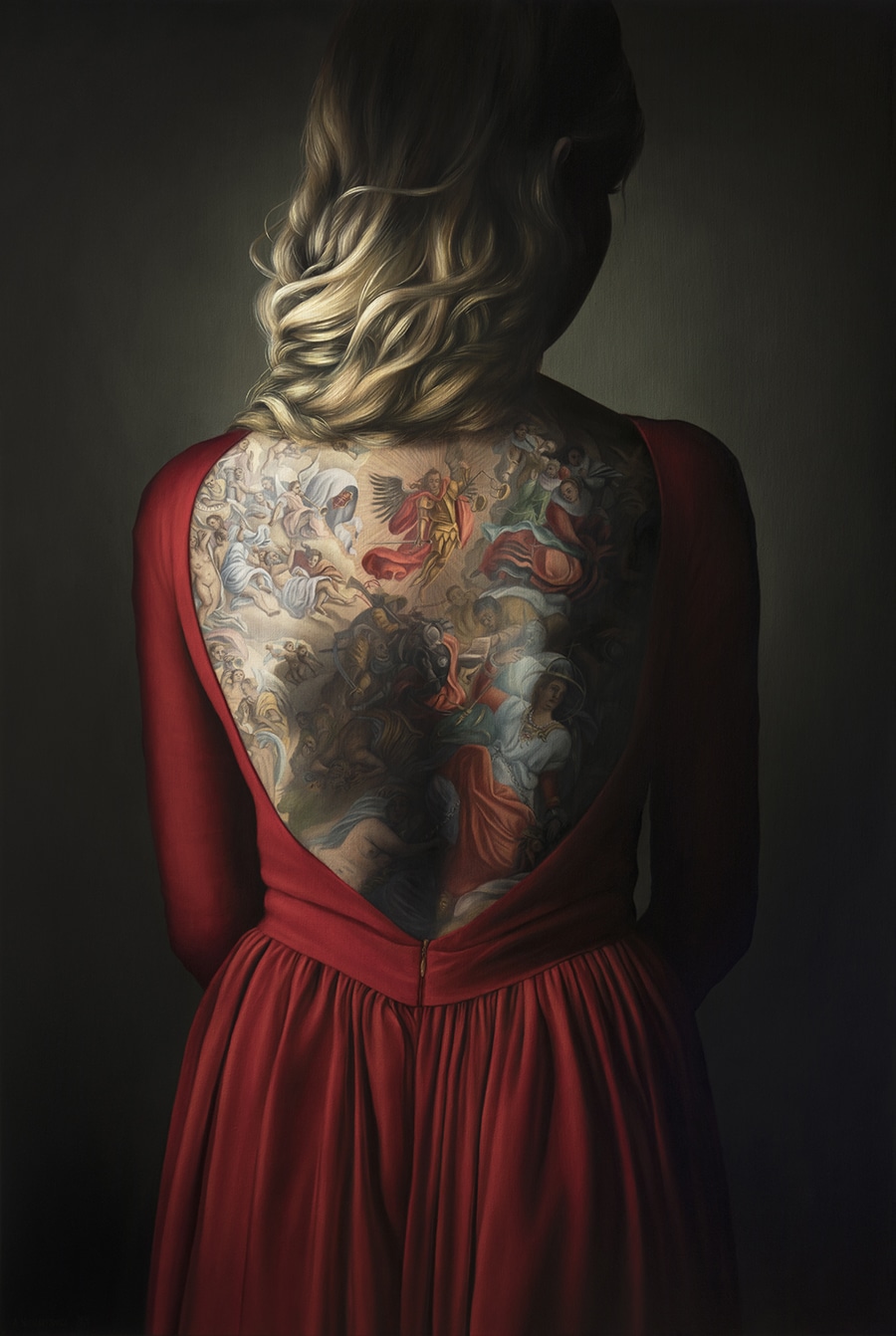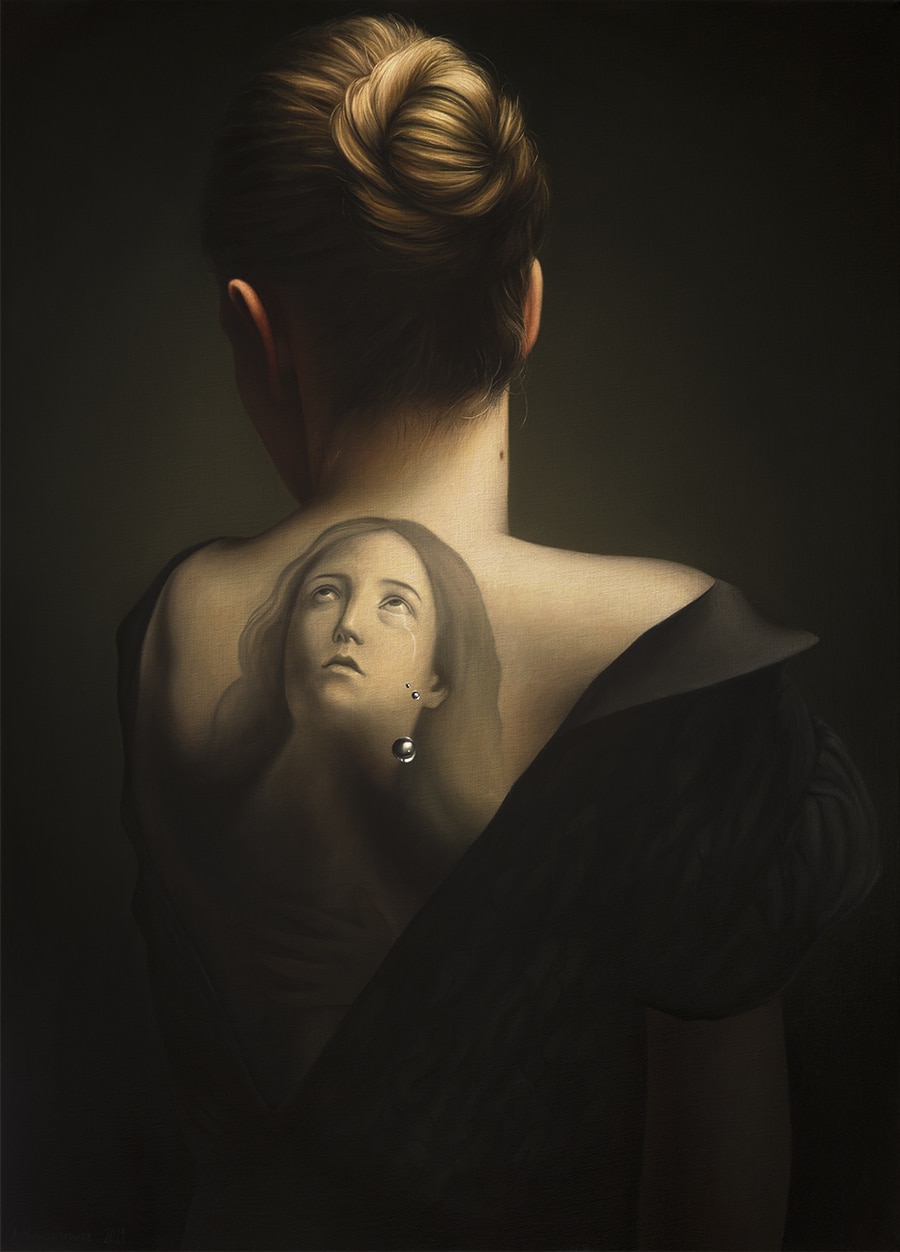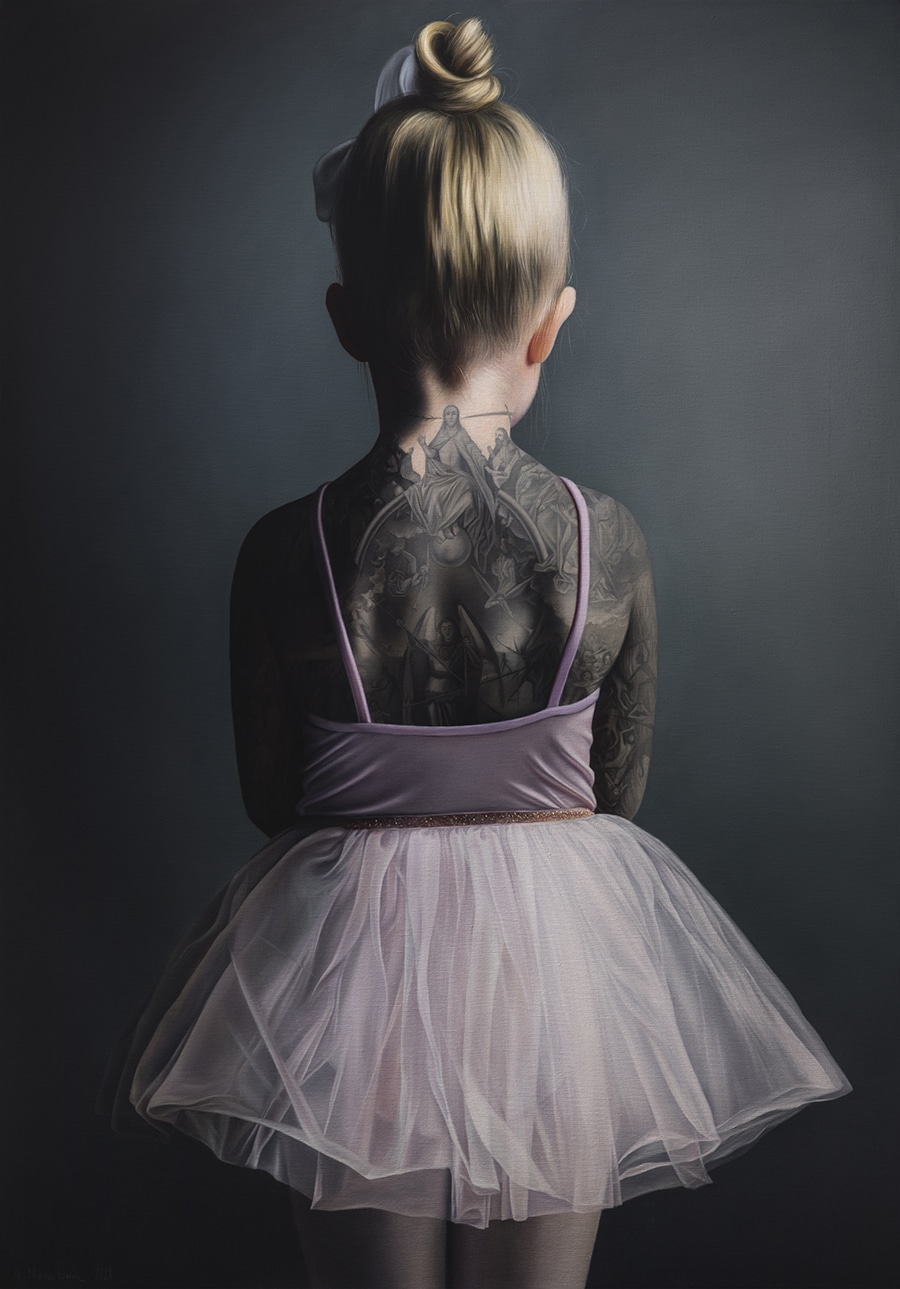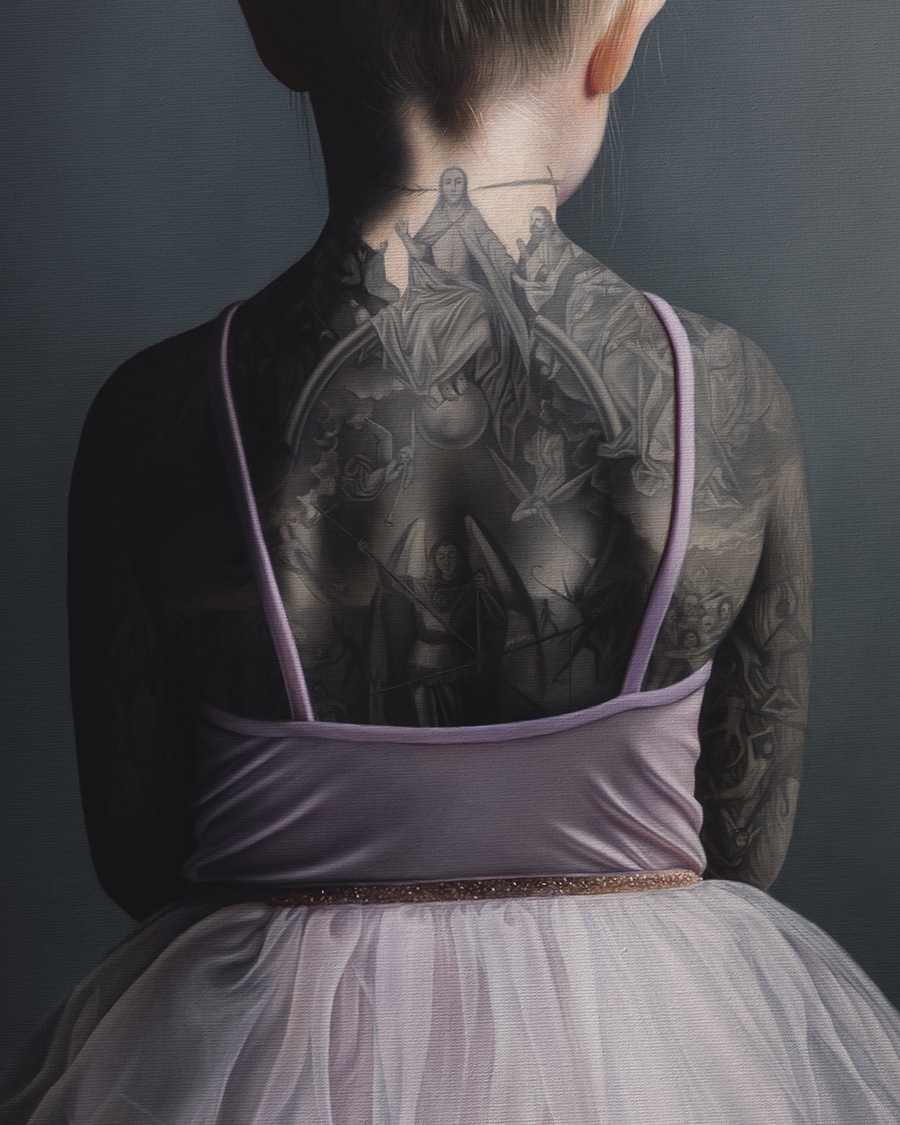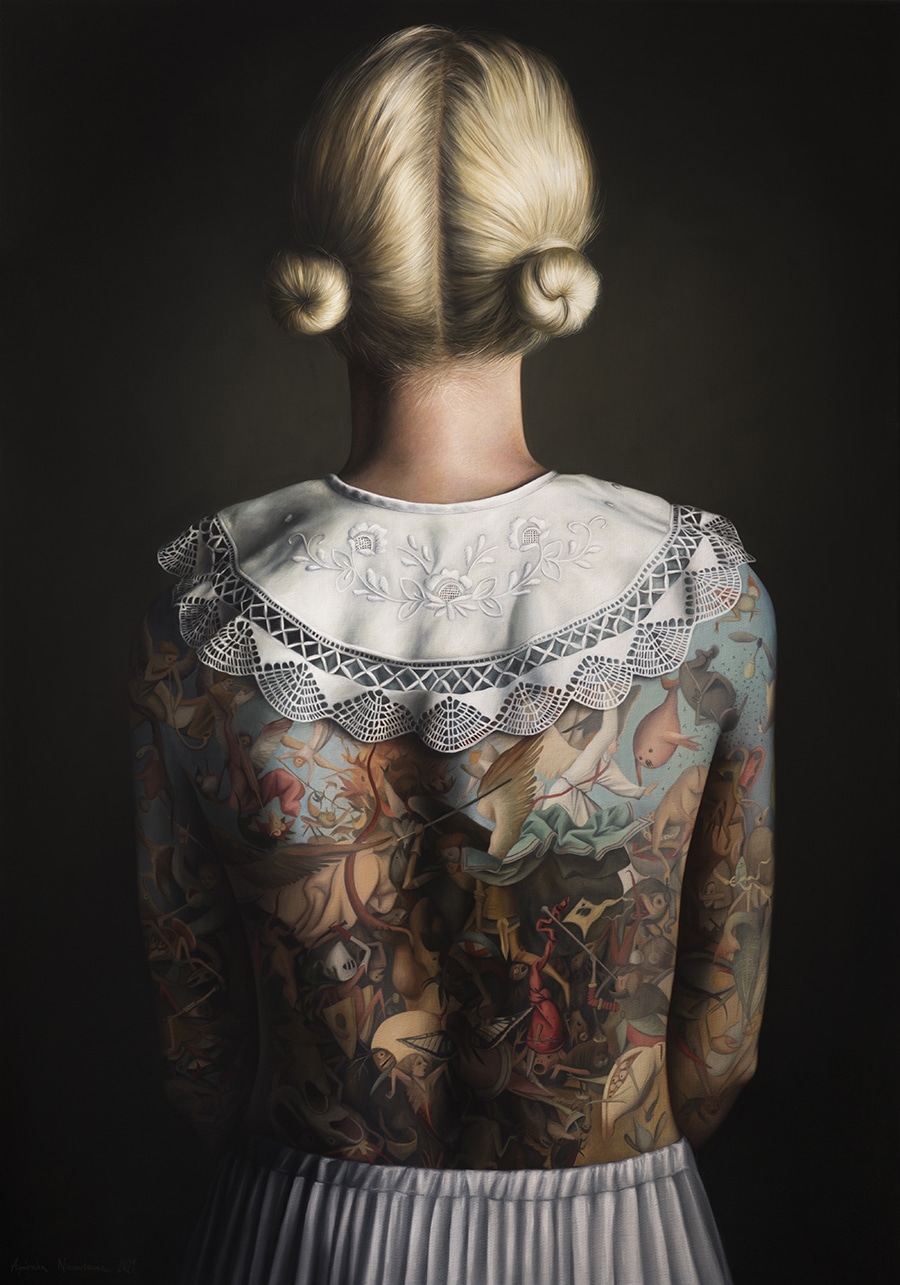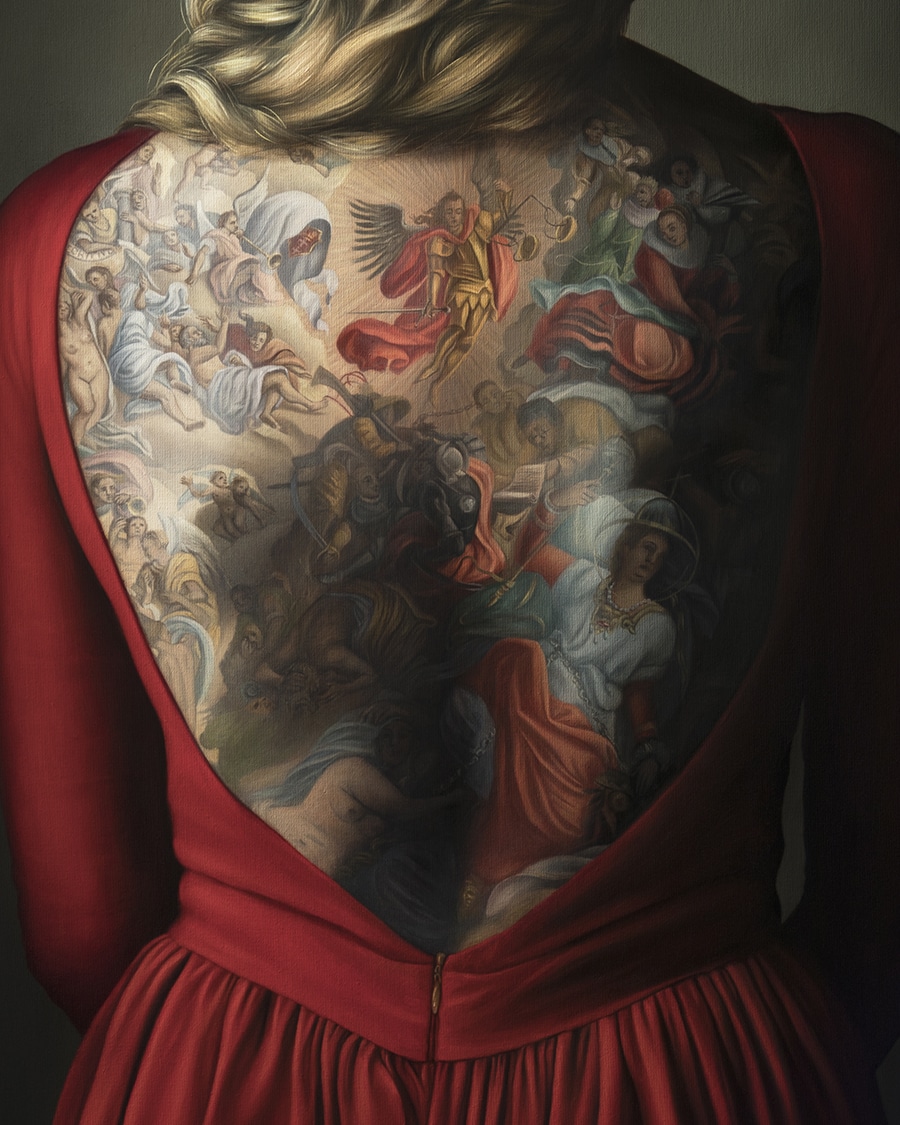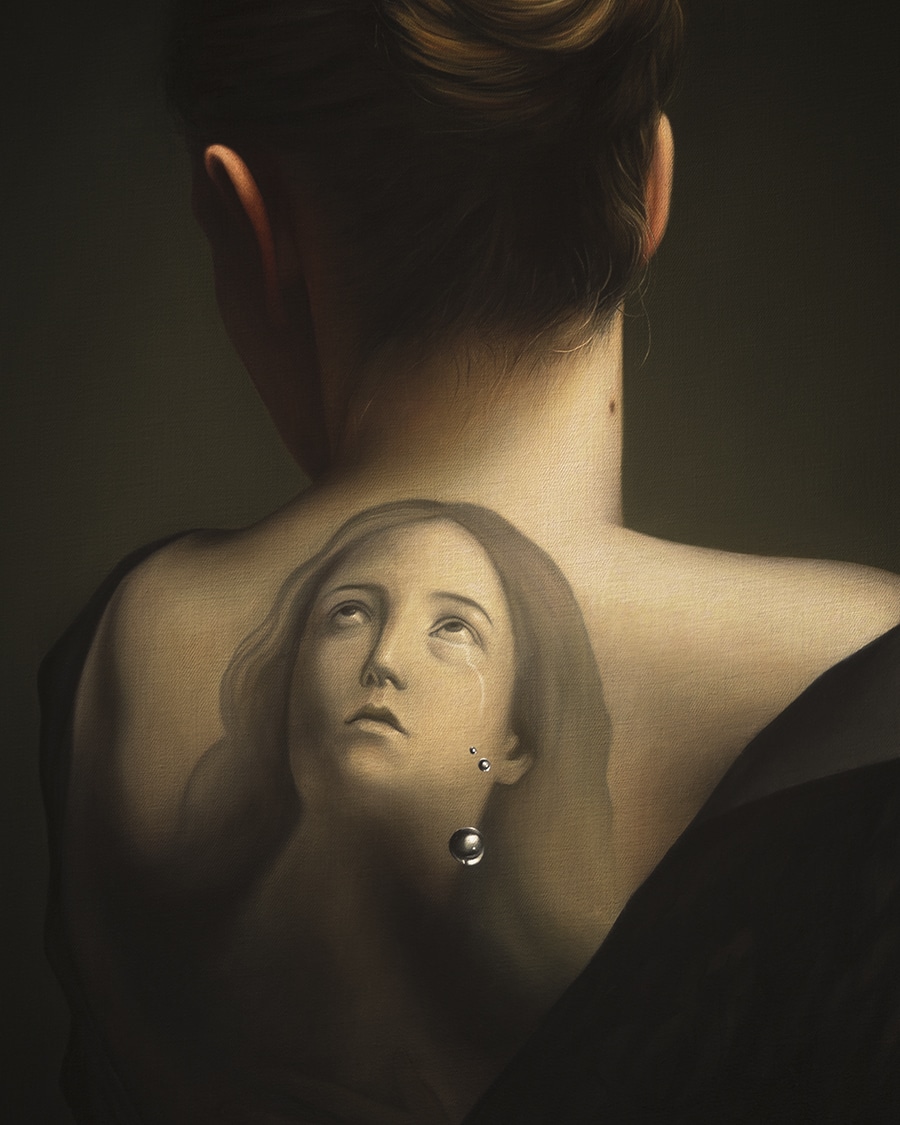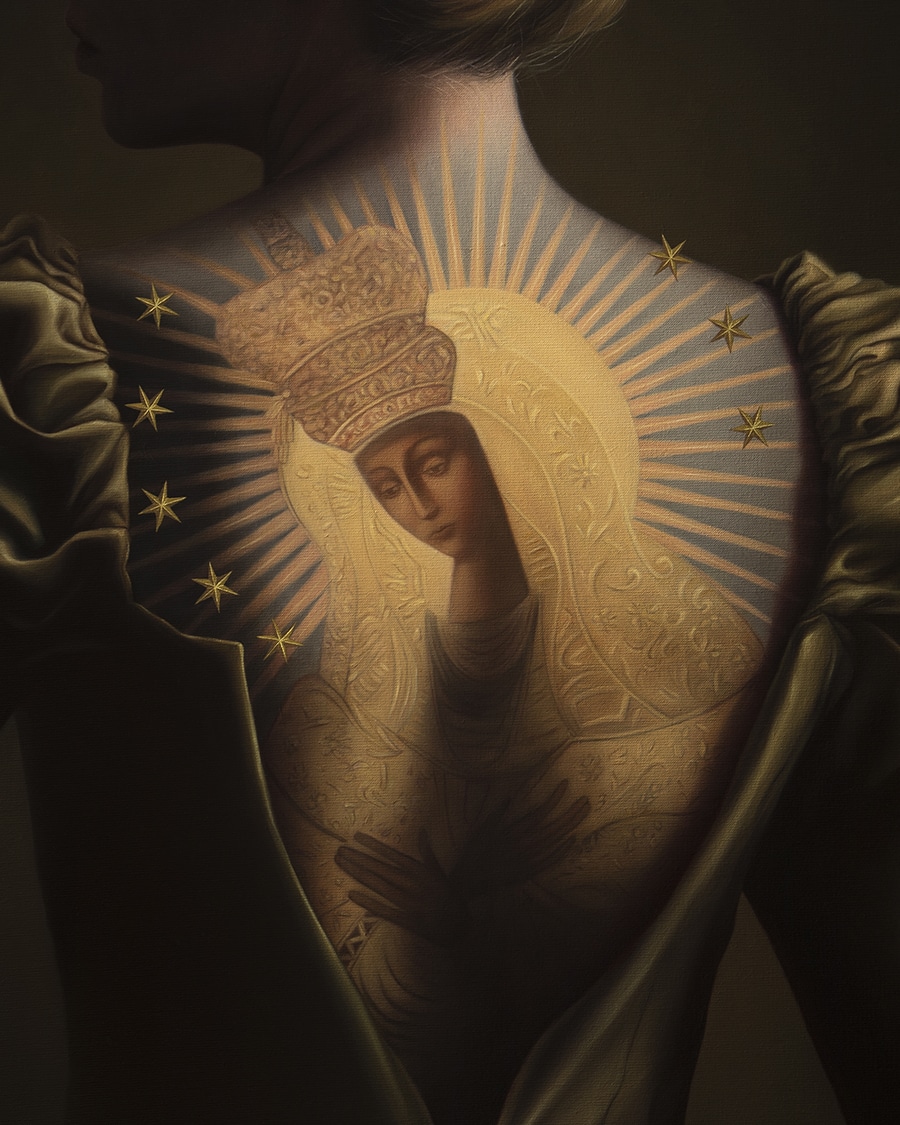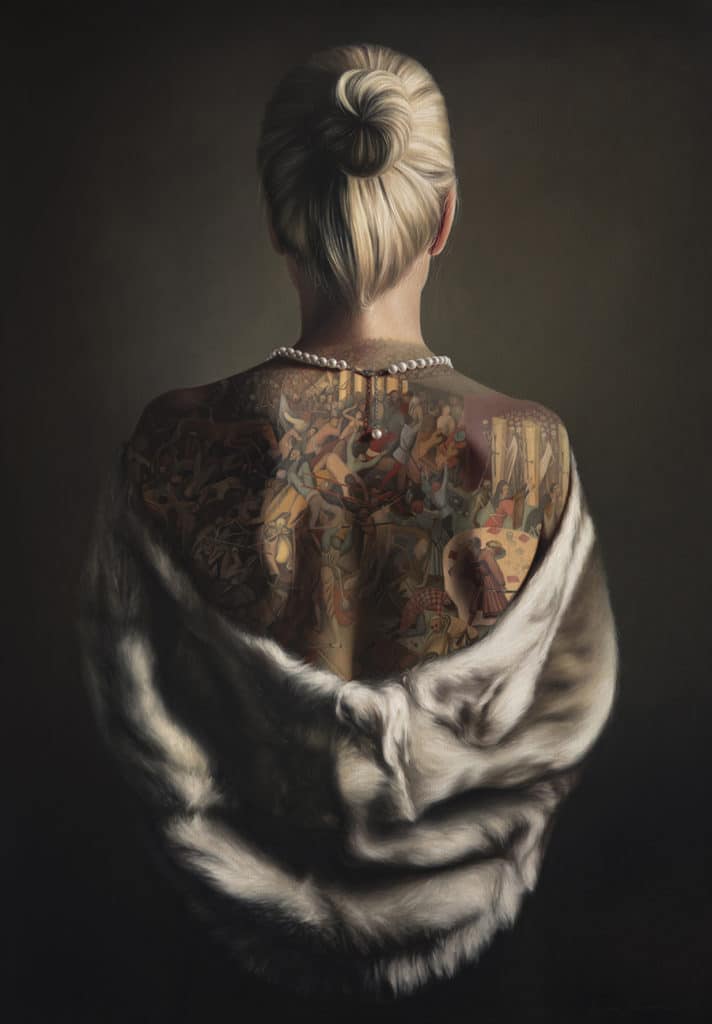Agnieszka Nienartowicz is a Polish artist who uses oil paints to create incredibly realistic portraits of women. These aren’t just any women, though. They’re covered in intricate tattoos, which are inspired by classical art. Back pieces with extremely accurate designs have been draped across their backs. The Old Masters’ masterpieces have been reinterpreted in a new, contemporary light by artists ranging from Hieronymus Bosch to Guido Reni.
We first came across Nienartowicz’s work several years ago, when she used Bosch’s Garden of Earthly Delights as the basis for an elegant oil painting. She was a recent art school graduate with tremendous promise at the time. She’s kept her word, and as the years have passed, she’s more than lived up to it. Her paintings can awe and make an impact over time. Each piece is infused with Nienartowicz’s spiritual sensibility, reflecting her own convictions.
By dressing these ladies in historical and religious imagery. Nienartowicz can benefit from the weight of history while also bringing it into the current century in this manner. The precise details of each canvas take on added significance due to the rich exploration. When you look more closely at work, there’s a newfound respect for the artist’s ability to execute it in an old-fashioned manner. She accurately depicts the classic composition on a tiny scale with subtle brushstrokes.
However, her ability to construct the human form and clothing in a highly realistic manner is offset by her propensity to create tiny things. As a result, each canvas is an art lesson in itself. She pushes the limits of what we may expect from contemporary art by marrying technical ability with emotional impact. Though many people consider abstract to be cutting-edge, Nienartowicz’s work shows that figurative oil painting can be just as innovative.
Agnieszka Nienartowicz: Website | Facebook | Instagram
